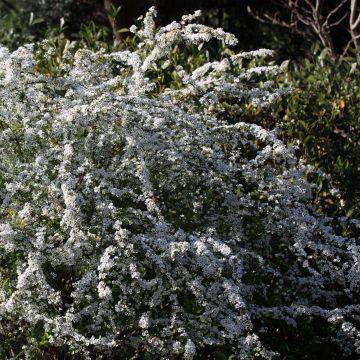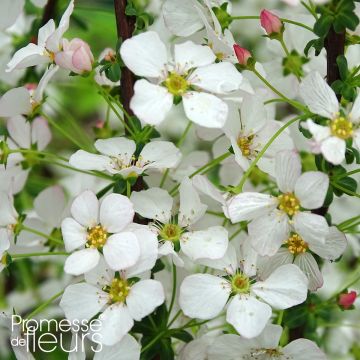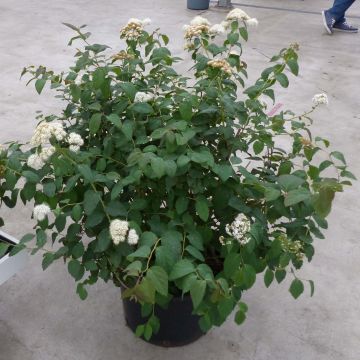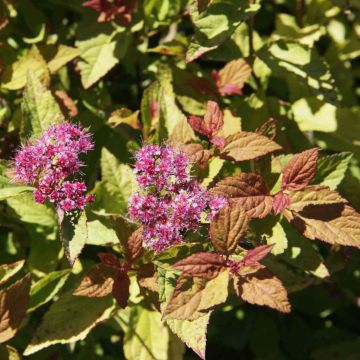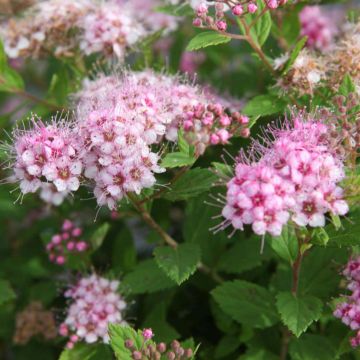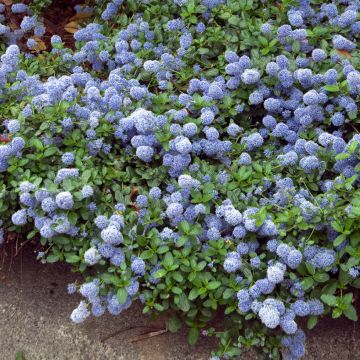

Spiraea japonica Candlelight
Spiraea japonica Candlelight
Spiraea japonica Candlelight
Japanese Spiraea, Japanese Meadowsweet, Japanese Bridewort
Our plants arrived quickly and in good health. I'm looking forward to seeing them grow.
michele, 17/02/2024
Special offer!
Receive a €20 voucher for any order over €90 (excluding delivery costs, credit notes, and plastic-free options)!
1- Add your favorite plants to your cart.
2- Once you have reached €90, confirm your order (you can even choose the delivery date!).
3- As soon as your order is shipped, you will receive an email containing your voucher code, valid for 3 months (90 days).
Your voucher is unique and can only be used once, for any order with a minimum value of €20, excluding delivery costs.
Can be combined with other current offers, non-divisible and non-refundable.
Why not try an alternative variety in stock?
View all →This plant carries a 24 months recovery warranty
More information
We guarantee the quality of our plants for a full growing cycle, and will replace at our expense any plant that fails to recover under normal climatic and planting conditions.

Would this plant suit my garden?
Set up your Plantfit profile →
Description
The Spiraea japonica Candlelight is a variety of Japanese spirea that is particularly bright in spring, with abundant flowering in summer, and also stands out for its compact habit, perfectly suited for small spaces and terraces. Its young leaves are tinged with bronze and quickly turn golden yellow. In summer, its beautiful clusters of deep pink flowers contrast against chartreuse green foliage, which will be painted with vibrant tones in autumn. Compact and long-lasting, it is suitable for borders or low-growing beds. It also adapts well to container gardening.
The 'Candlelight' Japanese Spirea, from the rose family, is a cultivar derived from Spirea japonica (synonym Spiraea x bumalda or Spiraea callosa), native to eastern and central China and Japan. This plant has a relatively slow growth rate and will not exceed 60-70 cm (23.6-27.6 in) in all dimensions at maturity. Forming a dense and rounded shrub with upright branches, this variety has ever-changing foliage composed of small, oblong and toothed leaves. The flowers appear between June and August, grouped in medium-sized terminal clusters, in violet-pink hues. This extended flowering period, sometimes recurring in September, attracts numerous butterflies, bees, and bumblebees. The foliage is deciduous, turning reddish-orange in autumn before falling.
The Japanese Spirea adapts to all climates and soils, but dislikes clayey and compact soils, as well as excessively hot or dry conditions. With its low and bushy habit, 'Candlelight' is ideal for low hedges, as a framework for perennial beds, or in large borders. Combine Japanese Spirea with white, red, or purple ground cover roses, as well as small yellow or orange shrubby potentillas. It is perfect as ground cover in shrub beds along pathways, or even in rock gardens. You can place this spirea at the forefront of a countryside hedge, accompanied by other dwarf varieties (Spiraea betulifolia), dwarf red willow (Salix purpurea Nana), small willows (Salix lanata, Salix repens 'Nitida'), dwarf Manchurian lilac Miss Kim, or dwarf Weigela (Nana Purpurea). It will thrive in containers or planters on your terraces and balconies, in not too dry conditions.
Spiraea japonica Candlelight in pictures




Plant habit
Flowering
Foliage
Botanical data
Spiraea
japonica
Candlelight
Rosaceae
Japanese Spiraea, Japanese Meadowsweet, Japanese Bridewort
Cultivar or hybrid
Other Spiraea
View all →Planting and care
Plant the Japanese Spirea 'Candlelight' in any soil that is not too dry, rather fertile, flexible, well-drained, preferably in full sun, although it tolerates partial shade. The presence of limestone, in moderation, is well tolerated. Water well in the first year. Prune in February-March to 10 - 15 cm (3.9 - 5.9 in) from the ground; late winter pruning is essential to achieve a beautiful flowering. Japanese Spiraea are perpetual plants; to promote a second flowering, it is important to lightly prune the plant or remove faded flowers to encourage a new growth in late summer, early autumn. This plant flowers on the shoots of the year. To maintain the vigor of the plant, it is also important to remove old branches at the base in spring. Apply a complete fertilizer in March. Plant the shoots with a spacing of 90 cm (35.4 in) at planting, preferably in autumn and winter.
Planting period
Intended location
Care
Planting & care advice
-
, onOrder confirmed
Reply from on Promesse de fleurs
Similar products
Haven't found what you were looking for?
Hardiness is the lowest winter temperature a plant can endure without suffering serious damage or even dying. However, hardiness is affected by location (a sheltered area, such as a patio), protection (winter cover) and soil type (hardiness is improved by well-drained soil).

Photo Sharing Terms & Conditions
In order to encourage gardeners to interact and share their experiences, Promesse de fleurs offers various media enabling content to be uploaded onto its Site - in particular via the ‘Photo sharing’ module.
The User agrees to refrain from:
- Posting any content that is illegal, prejudicial, insulting, racist, inciteful to hatred, revisionist, contrary to public decency, that infringes on privacy or on the privacy rights of third parties, in particular the publicity rights of persons and goods, intellectual property rights, or the right to privacy.
- Submitting content on behalf of a third party;
- Impersonate the identity of a third party and/or publish any personal information about a third party;
In general, the User undertakes to refrain from any unethical behaviour.
All Content (in particular text, comments, files, images, photos, videos, creative works, etc.), which may be subject to property or intellectual property rights, image or other private rights, shall remain the property of the User, subject to the limited rights granted by the terms of the licence granted by Promesse de fleurs as stated below. Users are at liberty to publish or not to publish such Content on the Site, notably via the ‘Photo Sharing’ facility, and accept that this Content shall be made public and freely accessible, notably on the Internet.
Users further acknowledge, undertake to have ,and guarantee that they hold all necessary rights and permissions to publish such material on the Site, in particular with regard to the legislation in force pertaining to any privacy, property, intellectual property, image, or contractual rights, or rights of any other nature. By publishing such Content on the Site, Users acknowledge accepting full liability as publishers of the Content within the meaning of the law, and grant Promesse de fleurs, free of charge, an inclusive, worldwide licence for the said Content for the entire duration of its publication, including all reproduction, representation, up/downloading, displaying, performing, transmission, and storage rights.
Users also grant permission for their name to be linked to the Content and accept that this link may not always be made available.
By engaging in posting material, Users consent to their Content becoming automatically accessible on the Internet, in particular on other sites and/or blogs and/or web pages of the Promesse de fleurs site, including in particular social pages and the Promesse de fleurs catalogue.
Users may secure the removal of entrusted content free of charge by issuing a simple request via our contact form.
The flowering period indicated on our website applies to countries and regions located in USDA zone 8 (France, the United Kingdom, Ireland, the Netherlands, etc.)
It will vary according to where you live:
- In zones 9 to 10 (Italy, Spain, Greece, etc.), flowering will occur about 2 to 4 weeks earlier.
- In zones 6 to 7 (Germany, Poland, Slovenia, and lower mountainous regions), flowering will be delayed by 2 to 3 weeks.
- In zone 5 (Central Europe, Scandinavia), blooming will be delayed by 3 to 5 weeks.
In temperate climates, pruning of spring-flowering shrubs (forsythia, spireas, etc.) should be done just after flowering.
Pruning of summer-flowering shrubs (Indian Lilac, Perovskia, etc.) can be done in winter or spring.
In cold regions as well as with frost-sensitive plants, avoid pruning too early when severe frosts may still occur.
The planting period indicated on our website applies to countries and regions located in USDA zone 8 (France, United Kingdom, Ireland, Netherlands).
It will vary according to where you live:
- In Mediterranean zones (Marseille, Madrid, Milan, etc.), autumn and winter are the best planting periods.
- In continental zones (Strasbourg, Munich, Vienna, etc.), delay planting by 2 to 3 weeks in spring and bring it forward by 2 to 4 weeks in autumn.
- In mountainous regions (the Alps, Pyrenees, Carpathians, etc.), it is best to plant in late spring (May-June) or late summer (August-September).
The harvesting period indicated on our website applies to countries and regions in USDA zone 8 (France, England, Ireland, the Netherlands).
In colder areas (Scandinavia, Poland, Austria...) fruit and vegetable harvests are likely to be delayed by 3-4 weeks.
In warmer areas (Italy, Spain, Greece, etc.), harvesting will probably take place earlier, depending on weather conditions.
The sowing periods indicated on our website apply to countries and regions within USDA Zone 8 (France, UK, Ireland, Netherlands).
In colder areas (Scandinavia, Poland, Austria...), delay any outdoor sowing by 3-4 weeks, or sow under glass.
In warmer climes (Italy, Spain, Greece, etc.), bring outdoor sowing forward by a few weeks.






























